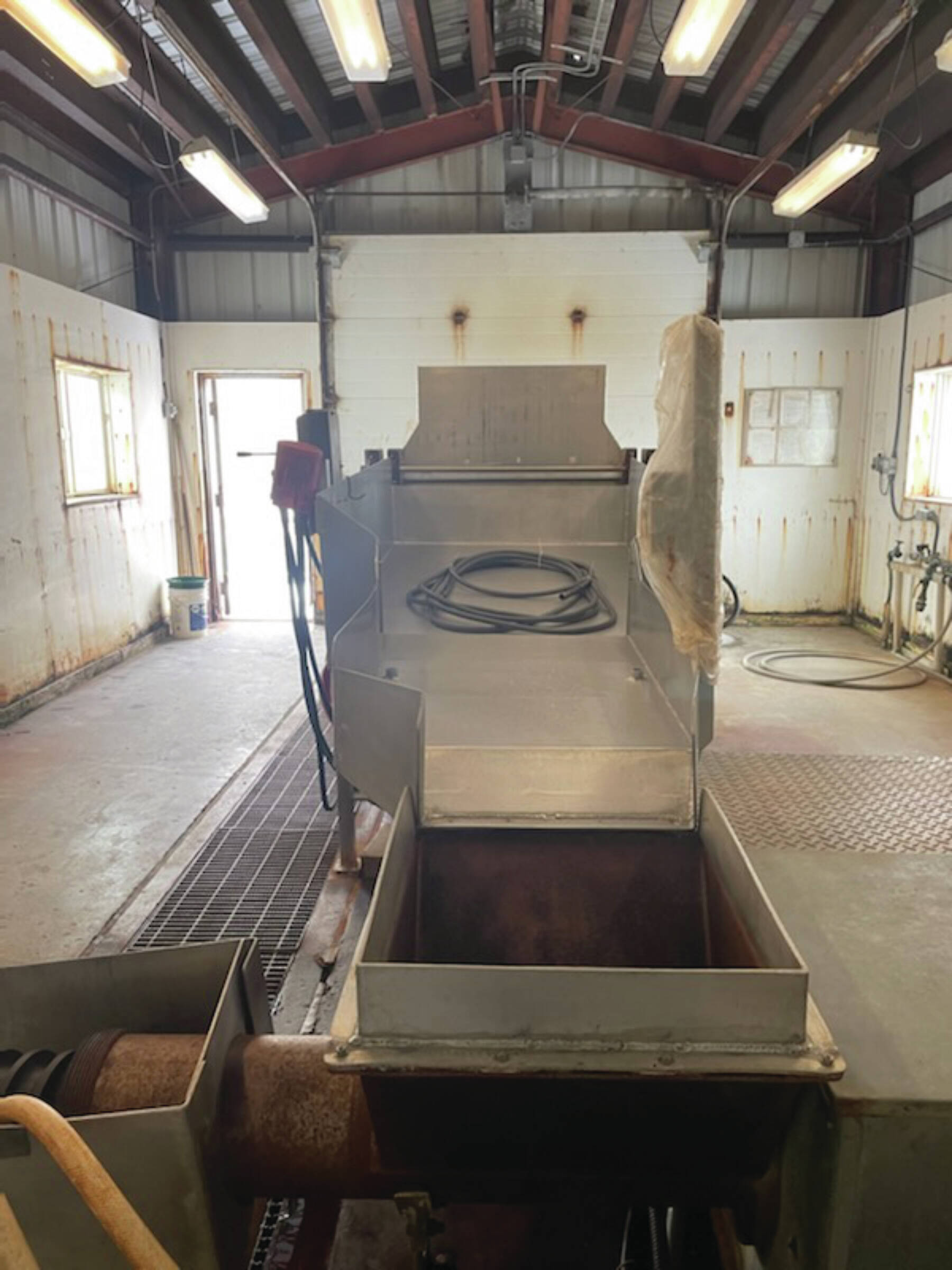The City of Homer held a special meeting March 14 to amend the fiscal year 2024 capital budget by accepting and appropriating a grant from the Alaska Department of Fish and Game for the first phase of the Fish Grinding Building Replacement project.
The Dingell-Johnson Fish Restoration grant was created in 1950 and provides funds for projects related to sport fisheries, boating access and aquatic education.
According to a memorandum to the city from Port Director Bryan Hawkins, the grant will assist with replacing the fish-grinding building and completing drainage improvements to meet Department of Environmental Conservation standards.
The purpose of the fish-grinding building, located behind the ice plant and fish dock on Fish Dock Road on the Homer Spit, is to help dispose fish waste in a sanitary procedure. The current facility is 22 years old.
Fish waste is generated on the Spit at the fish-cleaning tables in several different locations.
Carcasses are collected from the cleaning stations by City of Homer Port and Harbor staff and taken in totes to the station. The totes are loaded hydraulically onto a sorting table so that debris and garbage such as rocks and fish hooks can be removed from the carcasses, which is done by hand, and they are fed into DEC-approved grinding machine.
The ground waste is rinsed into an outfall slurry line that is pumped underground through a 6-inch high-density polyethylene pipe out of the back of the building and is drained into Kachemak Bay near the ferry terminal by Land’s End.
The port is also required to survey the seafloor near the outfall. That is accomplished with either a dive survey or submersible ROV to ensure there’s not a large waste buildup and potential biohazard.
Hawkins noted that the process includes substantial permitting and water quality testing to run the operation.
“There’s really a pretty extensive amount of work that goes into maintaining the outfall. But, it is a very responsible way to take care of these carcasses,” Hawkins said.
The Port and Harbor first looked into obtaining the grant for the facility when the city saw an increase in the sport fish industry and didn’t have an appropriate way to dispose of the waste.
They came across the Dingell-Johnson Fish Restoration funds, a portion of which come from the sales of sport fishing licenses on a national scale.
The Fish and Wildlife Service website, the federal agency that coordinates grant funds, also indicates that grant revenue comes from manufacturers’ excise taxes on sport fishing equipment, import duties on fishing tackle and pleasure boats, and a portion of gasoline fuel tax.
“Homer has been able to access that fund for several other features to improve local sport fish facilities: moving the cleaning tables out of the lower harbor and into the upper parking areas, putting roofs over the cleaning stations to keep the seagull waste away from seafood, and we got money for the load and launch ramp from that fund, too,” Hawkins said.
“It’s been tremendously helpful and so we went back to them again.”
The original contract for the grind and disposal facility was for 20 years and the Harbor knew it was time for an upgrade. There are some improved revisions planned for the upgrade.
“I think this is going to be the last one we build because we’re going to build it out of cement instead of steel,” Hawkins said, referencing a former Buy America clause on the use of steel for federally funded projects. “The new building should be a very solid replacement.”
Other ports in the state use variations of techniques to transport sport fish waste away from cleaning stations.
Hawkins said that Seward, for example, cleans at the top of the ramp and the waste falls to barges below that are lined with seine-web to hold the waste. The barges are towed out to deep water from the port and the holding bags are released off shore.
Valdez and Wrangell use variation of that system, as well, with barge transport.
“The problem with those systems is the sealife. Sea lions know the barge and carcasses are there and they break into the devices. You’re attracting sealife into your harbor,” Hawkins said.
“We got away from that because we started seeing more animals in the harbor and had negative sea lion and public interaction. We felt strongly that the best thing to do was get all of that out of the harbor.”
He also notes it removes the necessity of the barge travel and the unpleasant smell of the waste.
In a tour of the building, Hawkins described some additional building features that contributed to facility deterioration.
“This is a pretty standard metal building, insulated with foam on the inside and that kept the moisture next to the steel. Plus, we use saltwater to wash the fish grindings down drainage. The current door is metal,” he said. “The grinder we use is an industrial-size grinder and we have to ensure that every particle that comes out of here in not larger than one-half-inch square.”
Current plans for the upcoming remodel is to tear down the old building and use the existing footprint with a cement block material for the facility construction. The new door to the building will be fiberglass and the roll-up door will be as much plastic as possible.
There will be a ceiling included and the interior bricks will be covered in in shelf-ready plastic. The electrical components of the building will be replaced as well.
“We’re just finishing the building design now and then will need to do a cost estimate. Then, we’ll open the project up for bids and I hope to build after October 2024,” Hawkins said.
The facility is open each year from approximately late April until October. The fish-cleaning tables for the port will be reinstalled in May.



